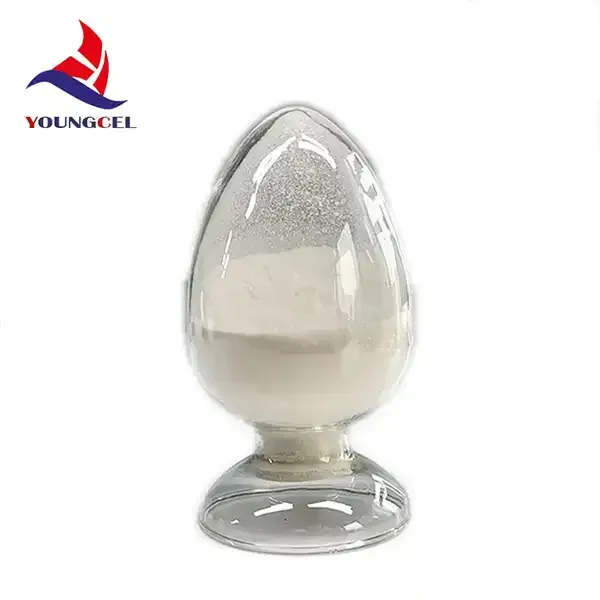Understanding Additive for Putty Enhancing Performance and Versatility
Putty, a versatile material used in construction, home improvement, and artisanal crafts, has evolved significantly over the years. With the increasing demand for performance, durability, and ease of use, manufacturers have started to incorporate various additives into putty formulations. This article delves into the role of additives in putty, exploring their types, benefits, and applications, rounding off with how they contribute to the overall quality and usability of putty.
What are Additives?
Additives are substances added to putty to enhance its properties, making it more suitable for specific applications. These compounds can alter the texture, flexibility, adhesion, drying time, and overall effectiveness of the putty. The incorporation of these additives is essential, as standard putty formulations may not meet the diverse requirements presented in different scenarios, such as outdoor vs. indoor use, or heavy-duty vs. decorative applications.
Types of Additives
1. Thickening Agents These are used to increase the viscosity of putty. Common thickening agents include cellulose-based compounds and other natural polymers. They help in achieving a desired consistency that makes the putty easier to apply and control during application, ensuring a smooth finish.
2. Plasticizers Plasticizers are added to enhance flexibility, which is especially important in applications where movement or expansion and contraction occur. This additive allows putty to maintain its integrity without cracking, extending its usability over time.
3. Fillers Fillers improve the bulk and reduce the production costs of putty. Common fillers include calcium carbonate and talc. They not only provide volume but also enhance the texture and coverage of putty during application.
4. Adhesion Promoters These additives enhance the bonding capabilities of the putty. They are particularly important for applications that require strong adhesion to various substrates, such as metal, wood, or concrete. By improving adhesion, they ensure that the putty remains securely in place once applied.
5. Drying Agents These facilitate quick-drying and curing processes, decreasing the time between application and subsequent finishing work. This is crucial for projects with timelines that require rapid progress.
6. Preservatives and Fungicides To prevent microbial growth and degradation, additives like biocides and fungicides are often included in putty formulations. This is especially important in humid environments where mold and mildew can develop.
Benefits of Using Additives in Putty
additive for putty

The integration of additives into putty formulations brings multiple benefits
- Enhanced Performance Additives tailor the properties of putty to meet specific requirements, enhancing performance in diverse applications. - Improved Usability By modifying the texture and workability, additives ensure that putty is easier to apply, manipulate, and shape, providing better control to users.
- Increased Durability Additives reinforce putty against environmental factors, such as moisture or temperature changes, extending its lifespan and maintaining its appearance over time.
- Cost-Effectiveness The use of fillers helps reduce production costs without compromising the quality of the putty, making it a more economical choice for consumers.
Applications of Enhanced Putty
The incorporation of additives has allowed putty to be utilized in a broader range of applications, including
- Construction In construction, putty serves as a sealant for joints and cracks, providing insulation and protection against moisture and air leaks.
- Renovation For home renovation projects, putty is often used for surface repairs, smoothing out imperfections, and preparing surfaces for painting or finishing.
- Arts and Crafts Artisans use specialized putties with additives tailored to specific artistic needs, like sculpting or decorative applications.
Conclusion
Additives play a crucial role in the formulation of putty, significantly enhancing its properties, usability, and effectiveness across various applications. By selecting the right combination of additives, manufacturers can create putty that meets the diverse needs of users in construction, renovation, and artistic endeavors. As technology continues to evolve, we can expect further innovations in putty formulations, providing even greater versatility and performance. Understanding these additives empowers users to make informed choices, ensuring they select the most appropriate putty for their specific projects.
-
Rdp Powder: Key Considerations for Wholesalers in the Building Materials IndustryNewsJul.08,2025
-
Key Considerations for Wholesalers: Navigating the World of Hpmc - Based ProductsNewsJul.08,2025
-
Hpmc Detergent: Key Considerations for WholesalersNewsJul.08,2025
-
Key Considerations for Wholesalers: China Hpmc For Tile Adhesive, Coating Additives, Concrete Additives, and MoreNewsJul.08,2025
-
Crucial Considerations for Wholesalers: Navigating the World of Construction MaterialsNewsJul.08,2025
-
Key Considerations for Wholesalers Sourcing Additive For Cement, Additive For Concrete, Additive For Putty from Additive Manufacturer Shijiazhuang Gaocheng District Yongfeng Cellulose Co., Ltd.NewsJul.08,2025




